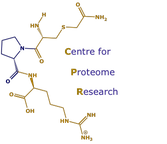May 2014
Can I have a copy of XXXXX software?
14/05/14 09:44 Filed in: Software
The answer is, in most, instances, no. The proprietary software that is provided with instruments often includes a free results viewer, but will lack most analytical capabilities. Further, the raw data that derive from the instrument are usually subject to high level processing for discovery or comparative analyses. We have paid a great deal of money for these packages, and they are usually copy-protected and restricted to single computers. These computers are usually very highly specified, running 64-bit OS, with every enhancement for handling large data files, and also for speed.
In general, external users will expect us to perform most of the analyses as well, and thus, we will access these packages on your behalf. If you wish to become adept at running the software yourself, that is no problem, but access to the computers is chargeable as well, and we will also have to make a charge for training. This is the only way we can operate without PFG subsidising other groups research.
In general, external users will expect us to perform most of the analyses as well, and thus, we will access these packages on your behalf. If you wish to become adept at running the software yourself, that is no problem, but access to the computers is chargeable as well, and we will also have to make a charge for training. This is the only way we can operate without PFG subsidising other groups research.
What is QconCAT?
14/05/14 09:44
QconCATs are standards for protein quantification, based on the two principles of surrogacy and stable isotope labelled internal standardisation. They were invented by Rob Beynon, Simon Gaskell and Julie Pratt.
The QconCAT itself is an artificial protein, created by de novo gene synthesis and prepared by heterologus expression, usually in bacteria.
The QconCAT itself is an artificial protein, created by de novo gene synthesis and prepared by heterologus expression, usually in bacteria.
